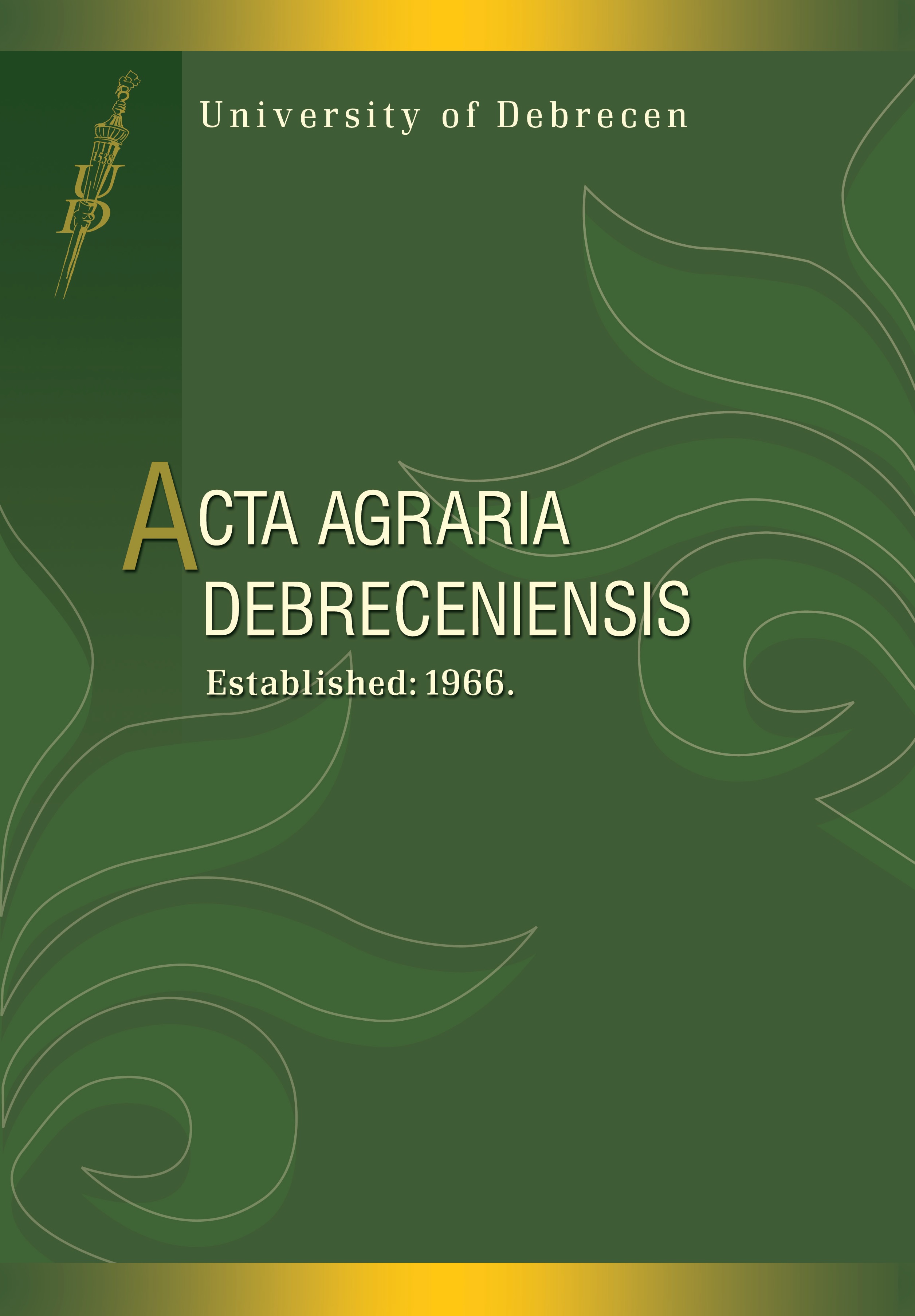Examination of the chlorophyll content of maize hybrids of different maturity groups at different N fertiliser doses
Author
View
Keywords
How To Cite
Abstract
Nitrogen fertilisation is a critical point of maize production. Five hybrids of different maturity dates were examined in a field experiment, three treatments (different application dates) and three basic fertiliser doses (0, 60, 120 kg ha-1 N) were used. At the 6-leaf-stage of maize, each fertilisation level of the 2nd and 3rd treatment was given 30 kg N ha-1 fertiliser active ingredient in addition to the basic fertiliser doses with the exception of the control plots and further 30 kg N ha-1 fertiliser was applied at the 12-leaf-stage. The final fertiliser doses were 0, 90 and 150 kg N ha-1 in the second treatment and 0, 120 and 180 kg N ha-1 in the 3rd treatment. The whole amount of the basic fertiliser (ammonium nitrate) was applied in the spring, one month before sowing.
The relative chlorophyll content of the maize leaves was measured, with a Minolta SPAD-502 measurement device. The measurements were carried out at the 6-leaf growth stage (V6) of maize on the youngest fully developed leaf of the 6th, 7th and 8th plants from the second row of each plot.
There were significant differences in the SPAD-readings measured at the V6 phenophase of maize between the hybrids (p<0.001) and the fertiliser treatments (p<0.05). The regression analysis did not show any correlation between the SPAD-values and fertilisation.
The highest significant SPAD-reading and yield were obtained by applying 120 kg ha-1 N. As a result of the regression analysis performed on yield, it can be concluded that the correlation between fertilisation and yield in the 1st and 2nd treatment was moderately close (r=0.439, r=0.480) and it was close in the 3rd treatment (r=0.513). The correlation between the SPAD-readings and yield was the closes in the 2nd treatment (r=0.639), while the SPAD-value had a 40.9% influence on yield (p<0.001).

 https://doi.org/10.34101/actaagrar/51/2082
https://doi.org/10.34101/actaagrar/51/2082